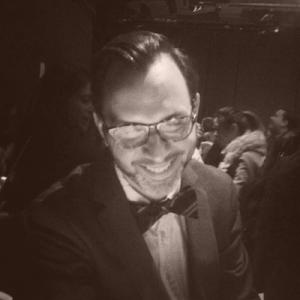Chris Chafin steps inside the studio of Muller Van Severen
A Little Bit of Magic
-
Hannes van Severen and Fien Muller
© Stefano Candito for L'AB/Pamono
-
© Stefano Candito for L'AB/Pamono
-
© Stefano Candito for L'AB/Pamono
-
© Stefano Candito for L'AB/Pamono
-
© Stefano Candito for L'AB/Pamono
-
© Stefano Candito for L'AB/Pamono
-
© Stefano Candito for L'AB/Pamono
-
© Stefano Candito for L'AB/Pamono
-
© Stefano Candito for L'AB/Pamono
-
© Stefano Candito for L'AB/Pamono
-
© Stefano Candito for L'AB/Pamono
-
© Stefano Candito for L'AB/Pamono
Hannes Van Severen and Fien Muller live a storybook life. The two artists, who have been a couple now for twelve years, live with their pair of adorable, mop-topped children in a few bright and airy buildings in the Belgian countryside. Flowers, paintings, and little paper craft projects lie everywhere. One building is their home and the other is the studio where they make sleek, whimsical, and unexpectedly sensible furniture under the label Muller Van Severen. They live off the clock, working when it makes sense, and wandering into the surrounding woodland when the outdoors beckons. To heighten the storybook-ness, they don’t call it hiking. They call it walking in the forest. “I feel very free,” says Muller. “This is the way we’ve always lived, but now we can do something with it.” They channel their independence and environment directly into their furniture.
Muller Van Severen’s designs are at once simple and complex, and thrive on the conflation of disparate pieces: chairs attached to shelves or tables jutting suddenly from otherwise slim shelving units. All of it is colorful, well crafted, and, as it turns out, inspired by the couple’s country idyll. Ghent, the Belgian city closest to their rural home, has industrial buildings in close proximity to centuries-old traditional Flemish houses, and it’s easy to recognize this tendency to put opposites in the same space in their work—but their world inspires them in more oblique ways, as well. “We see art and furniture in everything” says Van Severen. “When we drive in the car and pass by the harbor of Ghent, or when we see nice colors—it’s inspiring. What inspires us is normal life, and not really design or art masters.”
Van Severen and Muller were both successful artists in their own right before they began collaborating in 2011. Van Severen’s solo work, mostly sculpture, usually starts with an existing object like a wardrobe or a small set of stairs, which he flips or slices in such a way that it looks like it snuck through a portal from Wonderland. “When you change a little thing on a familiar form, it becomes something absurd and different,” he says, “a mix between the thing you know and the thing you don’t know. I was always interested in how people react to what they don’t know.”
Muller, a photographer, began most of her pieces with a white box which she would set about filling with objects that don’t traditionally go together. One photo has an upside-down rain boot, a block of cheese, a bit of wood, and what appears to be a piece of plastic. She is interested, she says, in looking at how objects, “come together, reflect, react on each other.” The effect is captivating, and often colorful—like Van Severen, she challenges our perspective, and forces us to imagine objects relating to each other in a new way.
You might think that two creative, successful individuals, each working in their own medium, could have trouble collaborating. Wouldn’t each one of them always be sure that they were right about everything? Of course, this isn’t their experience.
“It’s actually very natural and spontaneous,” Muller says, describing their collaboration. “It’s sometimes very strange to feel you can work so well together. It’s like ping-pong all the time. Sometimes Hannes starts to make something, sometimes I do. And by the reaction of the other one, it becomes something else. Very fast, we can do it. Ping-pong, back and forth.”
The fruits of this collaboration put the everyday in a new context, and keep the unexpected close at hand. In one piece, Installation S, beautiful soft leather pours between two thin struts, reaching a deep dip before being pulled back up and secured; next to it, four shelves, each a different color, climb the chair’s right side. The whole affair is topped with a graceful lamp. Other pieces combine shelves and tables, or turn cutting boards into chairs, or wall art into cutting boards.
“You can see it as a collage, almost; an assemblage,” says Van Severen. “When we start making something in the studio we are very impatient. If we have an image in our heads we want to make it as fast as possible. And we also like to use standard materials; they are basic materials with the standard dimensions and, in that way, you can put something together in a very quick and easy way. That’s how we like to work. It’s like you go to the forest and you find something and you make something. It’s the same with us.”
“We think about how two or more people can be together on the same piece of furniture, doing something different,” Muller adds. This ethos becomes obvious when the couple is photographed together with their work. In one image of the designers with their piece Duo Seat + Lamp, Van Severen sits up straight, businesslike in a blue blazer, his head gently resting on his hand. Muller is next to him, reclining at a heavily oblique angle, her face sleepily turned to the camera. Both brought together by the same candy red frame, forming a single, welcoming, puzzling whole.
They strive to create pieces that make their owners smile, by which they seem to mean a long-lasting, general happiness; a lifelong appreciation. “It’s not nice for a while,” says Muller. “It’s nice for your whole life, for the long term. It’s not a funny thing, like ha-ha, for two weeks. You have to re-discover and re-see it and re-think about it and use it in different ways.” It’s something you can look at from fresh angles, over and over, for years to come, like a story that you can retell to your children, finding new wrinkles every time. Something you learn from that also brings you joy. Like a fairy tale.
-
Images by
-
Stefano Candito
At home everywhere, Stefano grew up in Italy and—after Germany, China and the U.S.—he now lives in Paris. Architecture and people are unquestionably the muses of his work.
-
-
Text by
-
Chris Chafin
Chris is a Brooklyn-based writer who's contributed to publications like Rolling Stone, Wired, Fast Company, and The Awl. He'd be flattered if you'd consider following him on Twitter
-
Découvrez plus de produits
Tabouret en Contreplaqué Bleu par Studio Deusdara

Enfilade Reall Bleue de Studio Deusdara
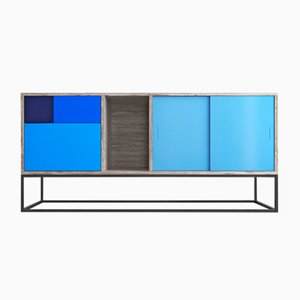
Enfilade Royal Verte de Studio Deusdara

Luminaire avec Pince par Jesse Visser, 2011
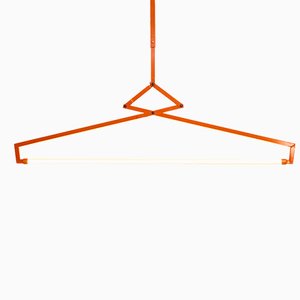
Tabouret Jaune en Contreplaqué de Studio Deusdare
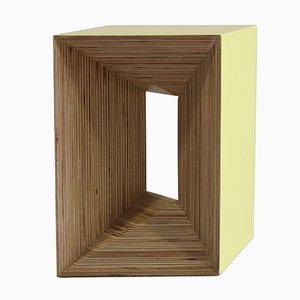
mm1 de Mario Milana

Fauteuil mm3 Jaune par Mario Milana

M de Mario Milana
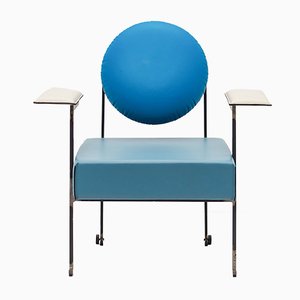
Rulla de Mario Milana
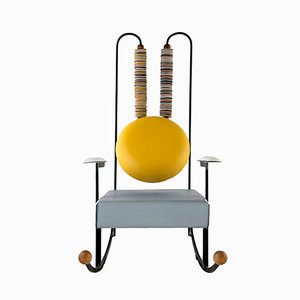
dePostura de Mario Milana
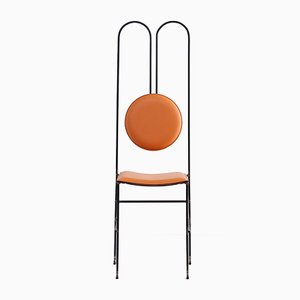
Bis de Mario Milana

Enfilade Real Orange par Studio Deusdara
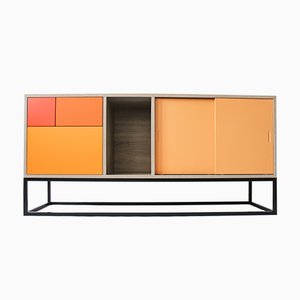
Plateau God's Serving de Studio Deusdara














 Fien Muller and Hannes Van Severen
© Stefano Candito for L'AB/Pamono
Fien Muller and Hannes Van Severen
© Stefano Candito for L'AB/Pamono

